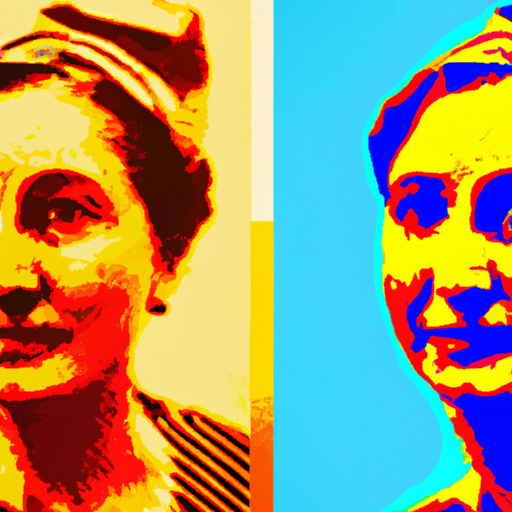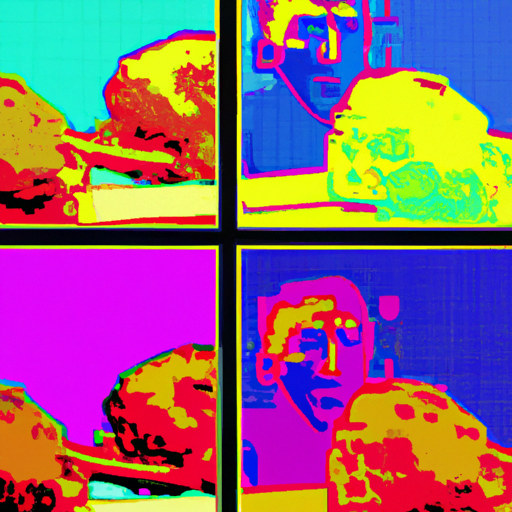
-
Table of Contents
- Exploring Generative Adversarial Networks (GANs) in Design
- The Basics of Generative Adversarial Networks
- Applications of GANs in Design
- 1. Image Generation
- 2. Fashion Design
- 3. Product Design
- 4. Typeface Design
- Case Studies
- 1. NVIDIA’s GauGAN
- 2. Adobe’s Project StyLit
- The Future of GANs in Design
- Summary
Exploring Generative Adversarial Networks (GANs) in Design

Generative Adversarial Networks (GANs) have revolutionized the field of design by enabling the creation of realistic and novel content. GANs are a type of machine learning model that consists of two neural networks: a generator and a discriminator. These networks work together in a competitive manner, with the generator trying to create content that the discriminator cannot distinguish from real data. This article explores the applications of GANs in design and the impact they have had on various industries.
The Basics of Generative Adversarial Networks
Before delving into the applications of GANs in design, it is important to understand the basic workings of these networks. GANs were first introduced by Ian Goodfellow and his colleagues in 2014. The generator network takes random noise as input and generates synthetic data, such as images, text, or even music. The discriminator network, on the other hand, tries to distinguish between the synthetic data generated by the generator and real data from a training set.
The generator and discriminator networks are trained together in a competitive manner. The generator aims to improve its ability to generate realistic content by fooling the discriminator, while the discriminator aims to improve its ability to distinguish between real and synthetic data. This adversarial training process continues until the generator is able to create content that is indistinguishable from real data.
Applications of GANs in Design
GANs have found numerous applications in the field of design, ranging from image generation to fashion design. Let’s explore some of the most notable applications:
1. Image Generation
One of the most well-known applications of GANs is in image generation. GANs can generate highly realistic images that are visually indistinguishable from real photographs. This has been particularly useful in fields such as computer graphics, where GANs can be used to create realistic 3D models and textures. GANs have also been used in the creation of deepfake images, which have raised ethical concerns due to their potential misuse.
2. Fashion Design
GANs have also made a significant impact in the fashion industry. Designers can use GANs to generate new and unique clothing designs, helping them explore a wide range of possibilities. GANs can also be used to generate virtual models that showcase these designs, eliminating the need for physical prototypes. This not only saves time and resources but also allows for more experimentation and creativity in the design process.
3. Product Design
GANs have also been applied to product design, enabling designers to generate new and innovative product concepts. By training a GAN on a dataset of existing products, designers can generate new designs that incorporate the characteristics and features of the training data. This can be particularly useful in industries such as automotive design, where GANs can help generate new car designs that are both aesthetically pleasing and functional.
4. Typeface Design
Typography plays a crucial role in design, and GANs have been used to generate new typefaces. By training a GAN on a dataset of existing typefaces, designers can generate new and unique fonts that maintain the style and characteristics of the training data. This allows for the creation of custom typefaces that are tailored to specific design needs.
Case Studies
Let’s take a look at some real-world case studies that highlight the impact of GANs in design:
1. NVIDIA’s GauGAN
NVIDIA’s GauGAN is an impressive example of GANs in action. GauGAN is a tool that allows users to create photorealistic landscapes by simply drawing rough sketches. The GAN behind GauGAN is trained on a large dataset of real landscape images, enabling it to generate realistic landscapes based on the user’s input. This tool has the potential to revolutionize the field of landscape design by making it more accessible and intuitive.
2. Adobe’s Project StyLit
Adobe’s Project StyLit is another notable case study that showcases the power of GANs in design. Project StyLit allows users to transfer the style of one image onto another, creating unique and visually appealing compositions. By training a GAN on a dataset of artistic styles, Project StyLit can generate images that combine the content of one image with the style of another. This tool opens up new possibilities for artists and designers to explore different visual styles and create compelling compositions.
The Future of GANs in Design
The applications of GANs in design are still evolving, and there is immense potential for further advancements. As GANs continue to improve in terms of generating more realistic and diverse content, they will likely become an integral part of the design process across various industries.
Some potential future developments include:
- Improved image and video synthesis capabilities
- Enhanced interactive design tools
- Automated design generation
- Personalized design recommendations
With these advancements, designers will have access to powerful tools that can assist them in the creative process, enabling them to explore new design possibilities and push the boundaries of innovation.
Summary
Generative Adversarial Networks (GANs) have revolutionized the field of design by enabling the creation of realistic and novel content. GANs have found applications in image generation, fashion design, product design, and typeface design, among others. Real-world case studies such as NVIDIA’s GauGAN and Adobe’s Project StyLit demonstrate the impact of GANs in design. The future of GANs in design holds immense potential, with advancements in image and video synthesis, interactive design tools, automated design generation, and personalized design recommendations. Designers can leverage GANs to unlock new possibilities and push the boundaries of creativity in their respective fields.
